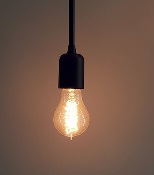What is Backlight?
Backlight is a kind of illumination utilized in monitors that employ liquid crystal display (LCD). Since liquid crystal display monitors are unable to emit light on their own, they rely on external light sources to display viewable images.
There are five different kinds of light sources used for backlighting: Incandescent light bulbs, Light-Emitting Diodes, Electroluminescent Panels, Cold Cathode Fluorescent Lamps and Hot Cathode Fluorescent lamps
Backlights come in four categories:
- Direct-lit
- Direct-lit with full-array local dimming
- Edge-lit
- Edge-lit with local dimming
Direct-lit
A grid of LEDs is present at the back of a typical LED LCD with global dimming. However, these LEDs are unable to be individually dimmed. Instead, the overall brightness or darkness of the screen changes depending on the image. In short, LCD’s that are directly lit don’t have local dimming, meaning blacks would be more greyish than black.
Direct-lit with full-array local dimming
The entire back of a display that uses a full-array local dimming method is covered with multiple zones of LEDs.
These zones will make the necessary section of the screen darker without disturbing the part of the screen that needs to be bright. Which is why this backlight delivers the best contrast (not as high as OLED), brightness (not as high as Quantum Dot Displays) and image quality out of all the other types of backlights.
Sometimes, however, a halo or bloom effect can be produced when one zone of LEDs is lighted while the surrounding zones are dimmed.Fortunately, this effect can be reduced by the use of mini-LED’s
Edge-lit
LEDs are positioned at the backlight’s borders on edge-lit displays, facing the center of the screen. They can therefore have incredibly thin designs.
Since the image is brighter on the screen’s borders and less bright in the middle, edge-lit displays’ biggest drawbacks are uniformity and black level in dark scenes.
Edge-lit with local dimming
This type of backlight addresses the aforementioned issue.
Dark scenes will result in deeper blacks than those of typical direct-lit and edge-lit displays since the LED zones will be dimmed. However, depending on how well the local dimming is executed, this also creates other issues like clouding and blooming of moving objects.
While too little local dimming scarcely improves the contrast ratio, too much local dimming causes more severe blooming. However, certain displays do contain the option of switching local dimming completely off.

